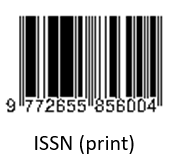Feasibility of Smartphone Camera Utilization and Power Point-based Video Analyzer on Kinematic Motion Experiment: An Inexpensive Method
(1) Universitas Sanata Dharma
(2) Telkom University
(*) Corresponding Author
Abstract
This study reports on the use of smartphone camera and power point application to analyze the kinematic motion experiment. This method is intended to make a better understanding of students concept using the tools that are commonly owned by students. The experiments performed in this study were one-dimensional (1-D) represented by falling motion and two-dimensional (2-D) using parabolic motion. In evaluating the experimental results, the obtained data were compared to the theoretical values that were calculated using analytical approach. The use of this method shows great measurement results in showing dependency of falling motion to gravitational acceleration and proofing the constant velocity at projectile motion on its horizontal plane in which it is comparable to the theoretical value. The video analyzation method also can be used as an alternative solution to the established software, even better when the higher resolution camera and frame rate was used. Noting that the tools used in the experiment were common tools around, thus, this can be used as a replacement for the advance tools.
Full Text:
PDFReferences
Wattanayotin, P., Puttharugsa, C. & Khemmani, S. (2017). Investigation of the rolling motion of a hollow cylinder using a smartphones digital compass. Phys. Educ. 52. 045009
Puttharugsa, C., Khemmani, S., Utayarat, P. & Luangtip, W. (2016). Investigation of the rolling motion of a hollow cylinder using a smartphone. Eur. J. Phys. 37. 055004
Hamidah, A., Sari, E. N. & Budianingsih, R. S. (2014). Persepesi Siswa tentang Kegiatan Praktikum Biologi di Laboratorium SMA Negeri Se-kota Jambi. J. Sainmatika. 8. 4959
Wee, L. K., Chew, C., Goh, G. H., Tan, S. & Lee, T. L. (2012). Using Tracker as a pedagogical tool for understanding projectile motion. Phys. Educ. 47. 44855
Basta, M., Gennaro, M. D., & Picciarelli, V. (1999). A desktop apparatus for studying rolling motion. Phys. Educ. 34, 371375.
Phommarach, S., Wattanakasiwich, P. & Johnston, I. (2012). Video analysis of rolling cylinders. Phys. Educ. 47. 18996
Vera, F. & Romanque, C. (2009). Another Way of Tracking Moving Objects Using Short Video Clips. Phys. Teach. 47. 3703
Medeiros, E. L., Tavares, O. A. P. & Duarte, S. B. (2009) Inexpensive Strobe-like Photographs. Phys. Teach. 47. 53641
Terzella, T., Sundermier, J., Sinacore, J., Owen, C. & Takai, H. (2008). Measurement of g Using a Flashing LED. Phys. Teach. 46. 3957
Bonato, J., Gratton, L. M., Onorato, P. & Oss, S. (2017). Using high speed smartphone cameras and video analysis techniques to teach mechanical wave physics. Phys. Educ. 52 045017
Klein, P., Grber, S., Kuhn, J. & Mller, A. (2014). Video analysis of projectile motion using tablet computers as experimental tools. Phys. Educ. 49. 3740
Mazzella, A. & Testa, I. (2016). An investigation into the effectiveness of smartphone experiments on students conceptual knowledge about acceleration. Phys. Educ. 51 055010
Testoni, L. A. & Brockington, G. (2016) The use of smartphones to teach kinematics: an inexpensive activity. Phys. Educ. 51. 063008
Septianto, R. D., Suhendra, D. & Iskandar, F. (2017) Utilisation of the magnetic sensor in a smartphone for facile magnetostatics experiment: magnetic field due to electrical current in straight and loop wires. Phys. Educ. 52. 015015
Bryan, J. A. (2009). Investigating the conservation of mechanical energy using video analysis: four cases. Phys. Educ. 45. 507
Jones, J. K., Krow, A., Hariharan, S. & Weekes, L. (2008). Measuring angles on digitalized radiographic images using Microsoft PowerPoint. West Indian Med. J. 57. 149
Meza, R. S. (2016) Sagittal cephalometric diagnosis using Power Point (Microsoft Office) Rev. Mex. Ortod. 4. e816
Halliday, D., Resnick, R. & Walker, J. (2010). Fundamentals of Physics (John Wiley & Sons)
Cruz, M., Cruz, R. F., Krupinski, E. A., Lopez, A. M., McNeeley, R. M. & Weinstein, R. S. (2004). Research Note: Effect of Camera Resolution and Bandwidth on Facial Affect Recognition Telemed. J. e-Health. 10. 392402
Blackford, E. B., & Estepp, J. R., (2015). Effects of frame rate and image resolution on pulse rate measured using multiple camera imaging photoplethysmography. Proc.SPIE. 9417.
DOI: https://doi.org/10.24071/ijasst.v2i2.2696
Refbacks
- There are currently no refbacks.
Publisher : Faculty of Science and Technology
Society/Institution : Sanata Dharma University

This work is licensed under a Creative Commons Attribution 4.0 International License.











